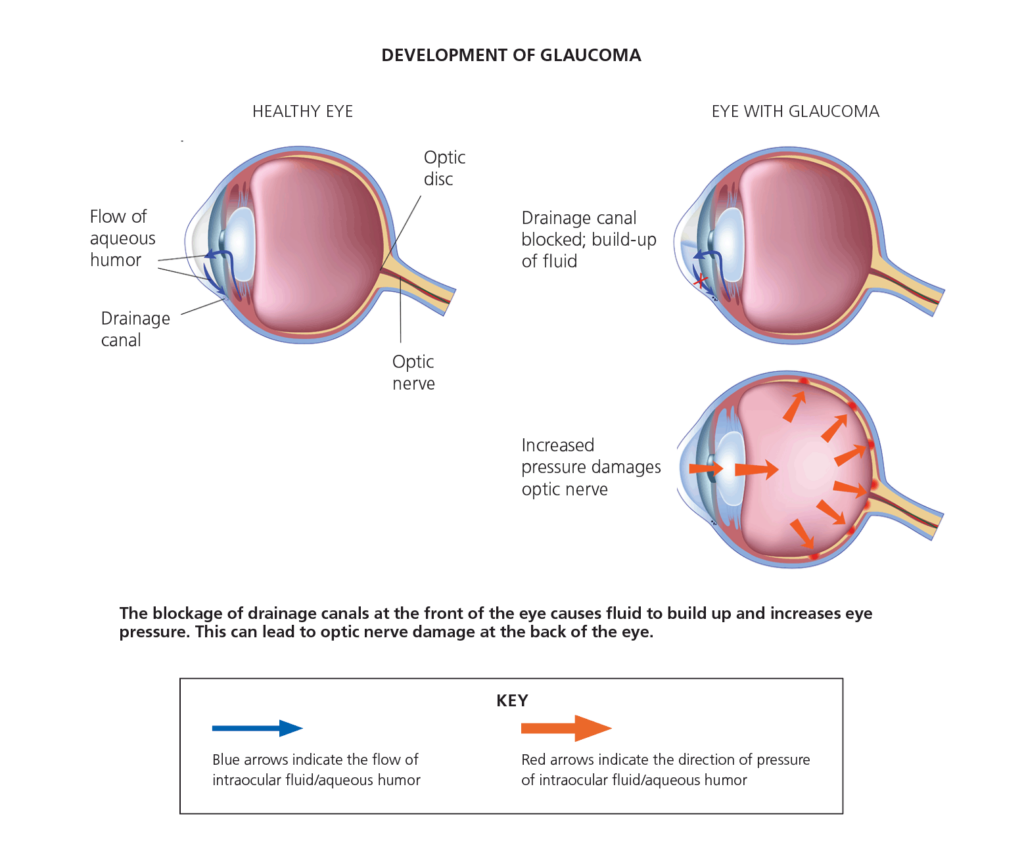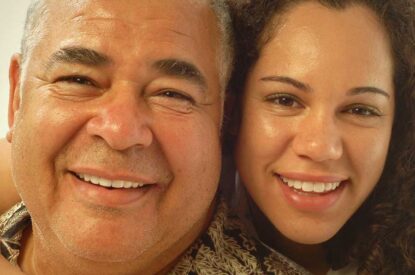Glaucoma Risks
Who Gets Glaucoma?
Glaucoma affects people of all ages, from babies to teens to younger and older adults.
Although everyone is at risk for glaucoma, those at higher risk include people who:
- Are over 60 years old
- Are of African, Asian, or Hispanic descent
- Have relatives with glaucoma
- Are very nearsighted (myopic) or far-sighted (hyperopic)
- Use steroid medications
- Have high eye pressure
- Have a thin central cornea
- Have had an eye injury
People at high risk for glaucoma should see a doctor now for a complete eye exam, including eye dilation. Your eye doctor will tell you how often to have follow-up exams based on the results of this eye health screening.
The following are groups at higher risk for developing glaucoma.
African Americans
After cataracts, glaucoma is the leading cause of blindness among African Americans and people of African descent. Glaucoma is six to eight times more common in African Americans than in Caucasians.
People Over 60
Glaucoma is much more common among older people. You are six times more likely to get glaucoma if you are over 60 years old.
Family Members with Glaucoma
The most common type of glaucoma, primary open-angle glaucoma, is hereditary. If members of your immediate family have glaucoma, you are at a much higher risk than the rest of the population. Family history increases risk of glaucoma four to nine times.
Hispanics in Older Age Groups
Studies indicate that the risk for Hispanic populations is greater than those of predominantly European ancestry, and that the risk increases among Hispanics over age 60.
Asians
People of Asian descent appear to be at increased risk for angle-closure glaucoma. Angle-closure glaucoma accounts for less than 10% of all diagnosed cases of glaucoma. People of Japanese descent are at higher risk for normal-tension glaucoma.
Steroid Users
Some evidence links steroid use to glaucoma. A 1997 study reported in the Journal of American Medical Association demonstrated a 40% increase in the incidence of ocular hypertension and open-angle glaucoma in adults who require approximately 14 to 35 puffs of steroid inhaler to control asthma. This is a very high dose, only required in cases of severe asthma.
Eye Injury
Injury to the eye may cause secondary open-angle glaucoma. This type of glaucoma can occur immediately after the injury or years later.
Blunt injuries that “bruise” the eye (called blunt trauma) or injuries that penetrate the eye can damage the eye’s drainage system, leading to traumatic glaucoma.
The most common cause is sports-related injuries such as baseball or boxing.
How Glaucoma Affects the Eye
The Optic Disc
You have millions of nerve fibers that run from your retina to form the optic nerve. These fibers meet at the optic disc. In most types of glaucoma, the eye’s drainage system becomes clogged so the intraocular fluid cannot drain. As the fluid builds up, it causes pressure to build inside the eye, which can damage these sensitive nerve fibers and result in vision loss. As the fibers are damaged and lost, the optic disc begins to hollow and develops a cupped shape. Doctors can identify this cupping shape in their examinations.
Intraocular Pressure
A normal intraocular pressure (IOP) ranges between 10 and 21 mmHg (“millimeters of mercury,” a measurement of pressure.) If the pressure remains too high for too long, the extra pressure on the sensitive optic disc can lead to permanent vision loss.
Although high IOP is clearly a risk factor for glaucoma, we know that other factors also are involved because people with IOP in the normal range can experience vision loss from glaucoma.

Glaucoma Risks Video
Vision Loss in Glaucoma
Glaucoma usually occurs in both eyes, but increased eye pressure tends to happen in one eye first. This damage may cause gradual visual changes and loss of sight over many years. Often, peripheral (side) vision is affected first, so the change in your vision may be small enough that you may not notice it. With time, your central vision may also be affected. Sight lost from glaucoma cannot be restored. However, early detection and treatment can prevent vision loss and maintain remaining vision.
Learn More


